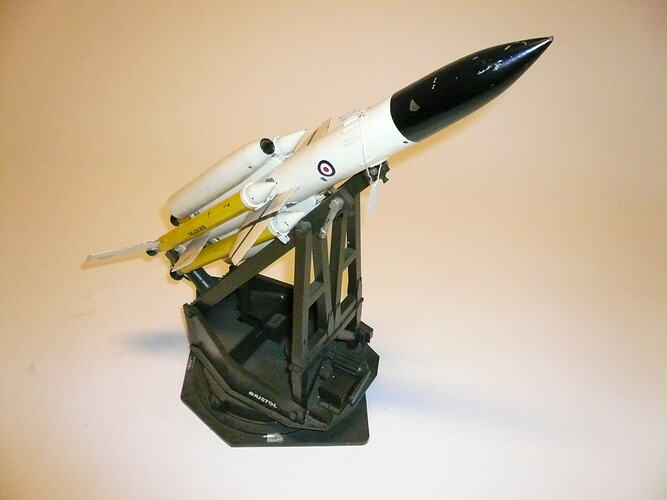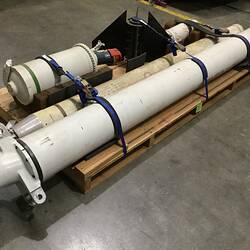The Bloodhound was the first British surface to air missile to see operational service, known initially as 'Red Duster'. Developed in the early 1950s as a joint project by Bristol Aircraft Co. and Ferranti Electronics, much of the development and testing work was performed in Australia at the Weapons Research Establishment at Woomera, South Australia beginning in 1953. The first live firing against a Jindivik target aircraft took place at Woomera in 1956. The Bloodhound entered service with the RAF in 1958 where it was eventually used by 11 RAF squadrons. The RAAF began using the Bloodhound in 1961 when 30 Squadron at Williamtown, NSW received the type. It was used until 1968 with a detachment based at Darwin between 1965 and 1968. The Bloodhound remained in use with British forces until 1991.
Two versions known as the Mk.1 and Mk.2 were produced. The Bloodhound was launched by four Gosling booster rockets with a burning time of 2.75 seconds. After these were expended, thrust was provided by a pair of Bristol Thor ramjet engines. The Bloodhound missile was capable of speeds up to Mach 2.2 and a maximum altitude of about 70,000 feet. A ground-based AEI radar unit was used to acquire and track the target with the missile following the beam. The Bloodhound could be fired singly or in salvoes.
More Information
-
Keywords
-
Localities
-
Authors
-
Article types


